Seligman, AZ
On the "Mother Road"
Historic Route 66.
Seligman is about 22 miles west on "The Mother Road" from Ash Fork, AZ - Historic US Route 66. When not visiting friends in Ash Fork, I often take the scenic drive out historic 66 to Seligman to pass a pleasant afternoon. I have met tourists from all over the globe there. Australia, Germany, France, China, Korea, The Netherlands, Spain and even far away California!
Many but not all arrive in tour busses on their way to the "Big Ditch" (Grand Canyon), Las Vegas, Flagstaff and other destinations.
Click on either navigation bottons below to go there or return here:
Above Seligman link
also includes a little
of Dewey-Humboldt
and Mayer
From Wikipedia:
The region was in the longtime homeland of the Havasupai people, who had a settlement in the present day Seligman area. The town site was on Beale's Wagon Road, and a stage stop on the Mojave Road
Originally Seligman was called “Prescott Junction” because it was the railroad stop on the Santa Fe mainline junction with the Prescott and Arizona Central Railway Company feeder line running to Prescott, in the Arizona Territory. The Atchison, Topeka and Santa Fe Railway had reached it in 1882. In 1886 it was renamed Seligman, after Jesse Seligman, one of the founders of J.W. Seligman Co. of New York, who helped finance the railroad lines in the area. The original feeder line to Prescott was replaced in 1891 by the Santa Fe, Prescott and Phoenix Railway with the Santa Fe mainline junction at Ash Fork instead.
Because of its flat land Seligman became a large switching yard consisting of many tracks, and served as a large livestock shipping center for the areas ranchers. It was also a terminal point for changing train crews between Winslow and Needles, who used overnight cottages in the town.
The 'Havasu House' was a Fred Harvey Company Harvey House hotel and restaurant in Seligman, serving the Santa Fe Railway and local residents It was named “Havasu” after the native Havasupai tribe of the area. Adjacent to it was the Santa Fe Depot and Reading Room. The Havasu Harvey House opened in 1905, closed in 1954, and was demolished in 2008.
Passenger trains ceased stopping in Seligman in 1984. The Burlington Northern Santa Fe Railway (BNSF) has owned the tracks through town since 1996, which carries numerous freight trains and nonstop Amtrak trains. The former Santa Fe Reading room, is now located at the Seligman High School.
The Seligman was on the original U.S. Route 66 from 1926 through 1978, when Interstate 40 bypassed it a couple miles south. Seligman experienced its real heyday after World War II, when returning veterans and other motorists hit the road and made the Southwest a popular tourist destination. The Seligman Commercial Historic District protects the historical central area's early 20th century commercial buildings along Historic Route 66, a revived popular tourist destination. Historic district contributing properties include the include Pitts General Merchandise Store and the U.S. Post Office from 1903, the Pioneer Hall and Theatre and the Seligman Garage from 1905, and the Seligman Pool Hall from 1923.
In 1987 Seligman gained its name “Birthplace of Historic Route 66” due to the efforts of Seligman residents, who convinced the State of Arizona to dedicate Route 66 a historic highway. Seligman is the first stop heading west on the longest uninterrupted stretch of historic Route 66, running around 160 miles (260 km) to Topock on the east side of the Colorado River.
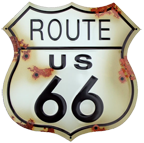
--------------------------------
Route 66
The longest original, uninterrupted stretch of Route 66 still in existence, approximately 92 miles long, can be found between Ash Fork, Arizona, and Kingman, Arizona, beginning just beyond Ash Fork at Crookton Road. This stretch of the route runs parallel to the Santa Fe roadbed.
US Route 66 provided a slight boost to the town's economy in the 1950's, but construction of the divided highway through the town resulted in the destruction of many of the storefronts, sidewalks and residential streets, and forever altered the aesthetic qualities of the downtown area.
Part of what was once Route 66 still runs directly through Ash Fork, serving as a main thoroughfare now known as Park Avenue, along which the community's post office is located. A few historic buildings and some old railroad company houses can be seen along this road.
---------------------------
![]()
John Green
10/13/17
Please e-mail any comments
or questions to:
ccolleague@cox.net
-----------------
A new story featuring
and located in large part
in Ash Fork and Seligman:
A new story featuring
and located in large part
in Ash Fork:
The Wind in
the Junipers
For young and
young-at-heart readers.
CONTENTS
THE BEARAZONA BEARS
A family of bears learns what giving is really all about.
THE LAST GUNFIGHT
IN ASH FORK
Young Jordie Conboy learns from his grandfather that legends and heroes are seldom what they seem.
FEETIE PAJAMAS IN OLD ARIZONA
A little boy’s love for his sister reaps an unusual reward with consequences that are unforeseen.
THE LITTLEST SNOWMAN ON ROUTE 66
When her family moves from Ash Fork to Flagstaff,
little Wendee Goldman has a hard time adjusting until she accidently applies a little magic and finds a true friend.
STOWAWAY SUZI FROM SELIGMAN
Jonnie Halloran, a widower raising his 12 year old son Luke gets a big surprise when he returns to their ranch in
Ash Fork.
LOLA, SAM AND THE JACKALOPE
Two dogs who are best friends help a mother jackrabbit and have an unexpected meeting with the mythical Jackalope.
APPENEDIX
A brief history of Ash Fork
Notes on story telling
178 pages/illustrated
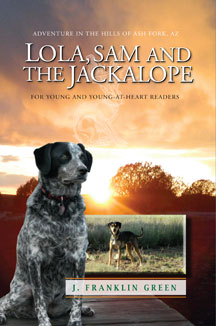
Above is one of two new books set in Ash Fork.
CLICK HERE
FOR MORE
INFORMATION
OR GO TO: www.jgreenbooks.com
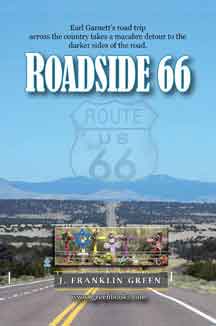
Following the premature death of his wife,
Earl Garnett, a professional writer, decides to drive across America. Along the way, he discovers the country, as he never imagined it.
Soon, cryptic writings appear on his laptop, often coinciding with roadside memorials that lead him into the darker sides of the road. Ultimately, he must decide whether or not to follow the prompting of these haunting passages and accept the consequences.
204 pages
See website for more:
CLICK HERE
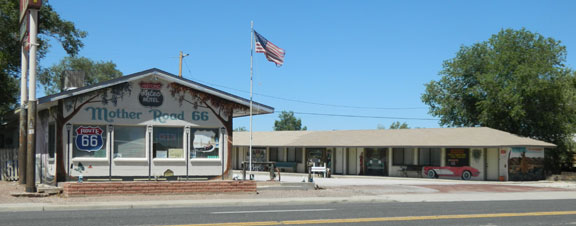
The Aztec Motel
The Mother Road - Every business in town reflects the heritage of Rt.66. At one time the main US highway to the west and used by the "Okies" and others fleeing the dustbowl of the 1930's. Even Tom Joad, the Steinbeck character in "The Grapes of Wrath."
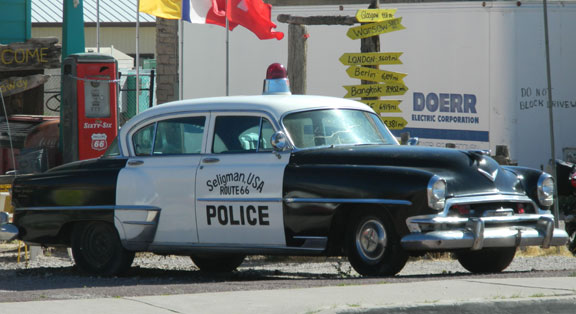
The iconic car and destination post on main street. London? Only 5,609 miles away but you can't get there on Route 66 so why bother?
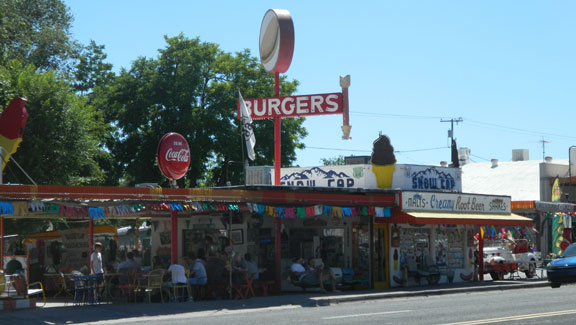
The Snow Cap... all kinds of people from all over the globe stop here for food, ice cream and silly string and other jokes from the staff!
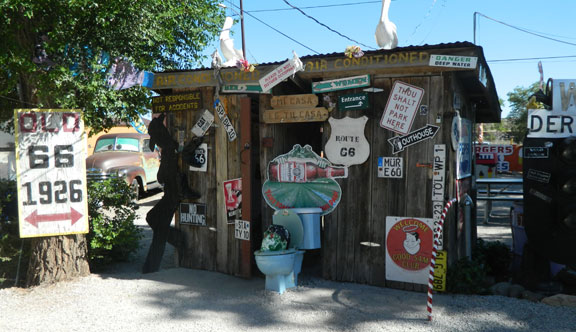
Behind the Snow Cap... just in case you "gotta go"...
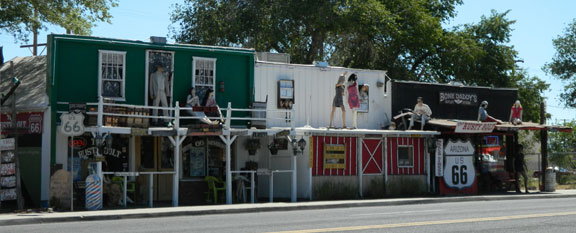
The Rusty Bolt
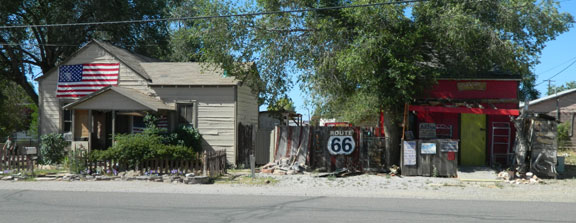
A very patriotic home!
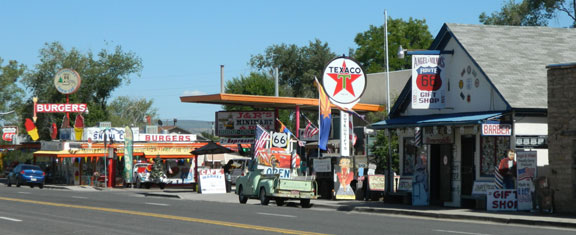
J&R's right next to the Snow Cap.
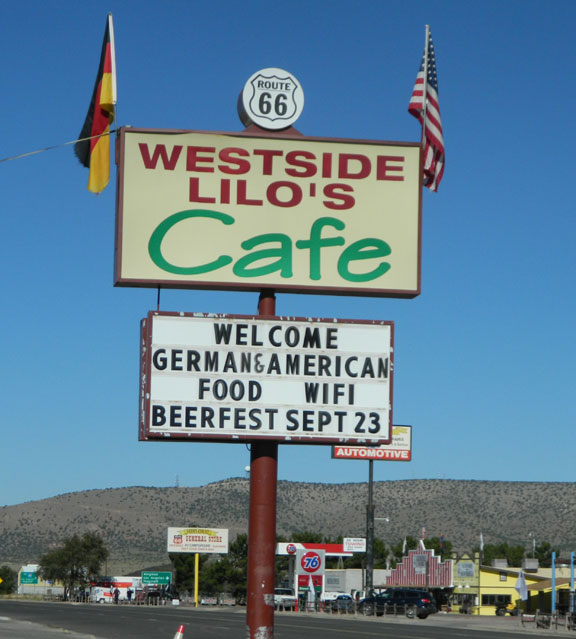
One of the best places to eat in Seligman!
==========================================
DEWEY-HUMBOLDT
A historic mining and ranching community on state route 69 between Prescott and I-17. Dewey Humboldt was the site of the first territotrial convention!
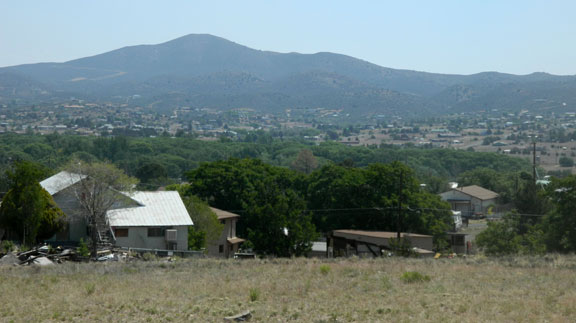
BELOW: The Dewey Humbolt museum. Originally a a bank built in 1918.
see their website at: www.dhhsmuseum.org
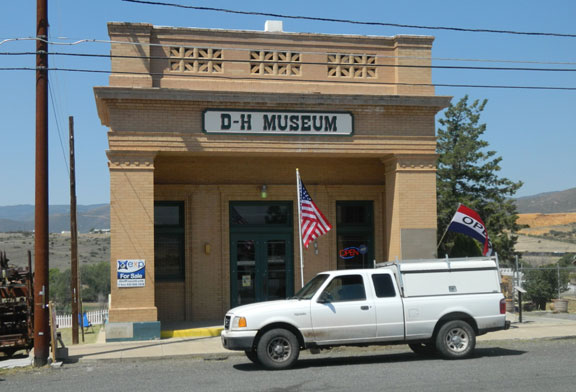
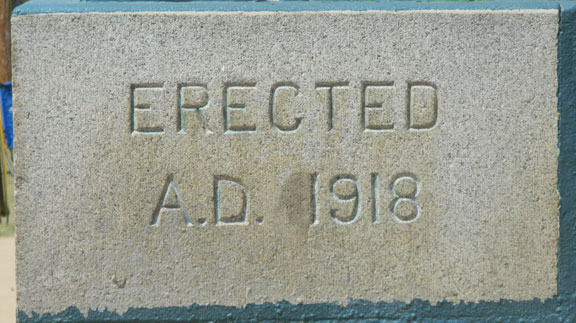
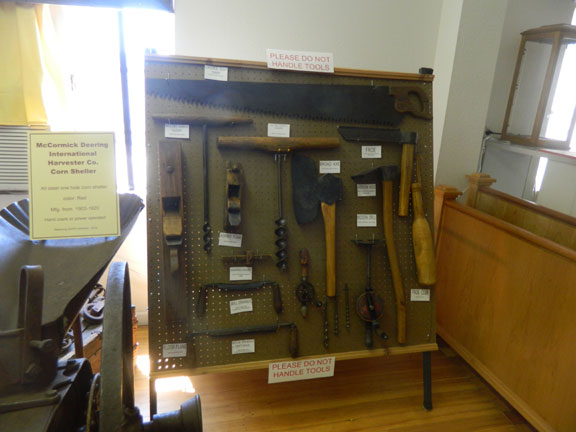
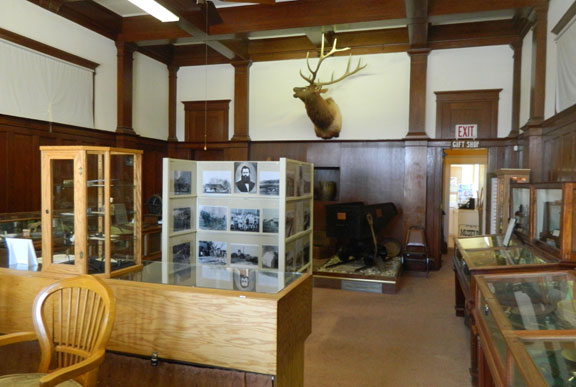
Behind the door in the far back corner is a passageway to the rear. It still has a partially dug hole in the concrete and steel wall from an attempted robbery back in the day. The crooks gave up when the hit the steel reinforcement and the sun was coming up!
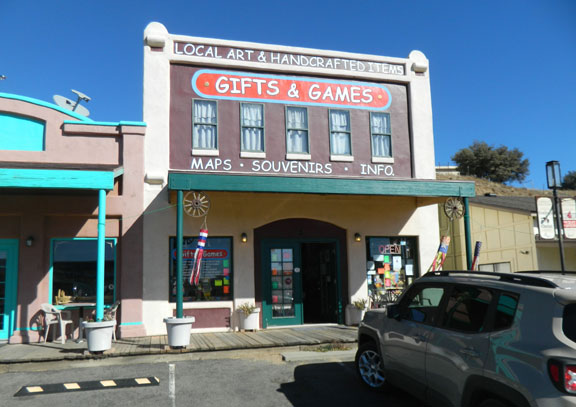

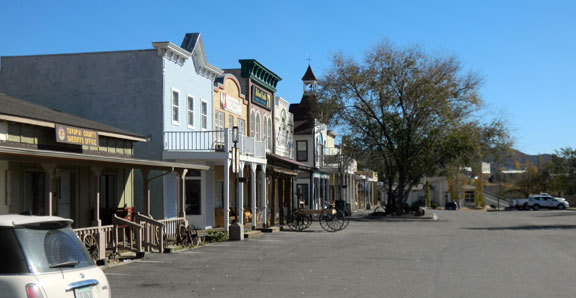
Gifts & Games
Unique, interesting, and delicious items from local artisits, artisans and authors.
2735 Highway 89, Humbolt, AZ - Wed-Sat. 10-6 - Sunday 11-5
see them on Facebook at:
https://www.facebook.com/pages/Gifts-and-Games/379918605373145
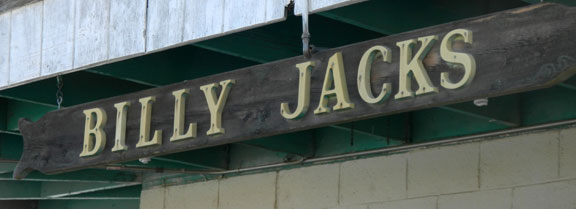
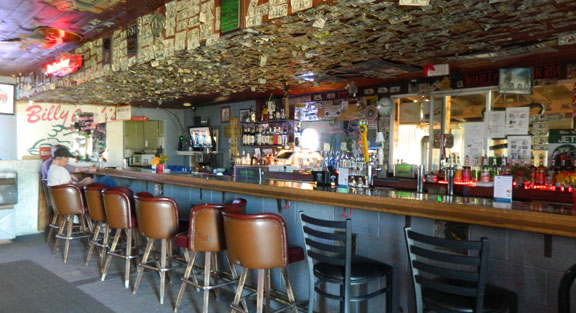
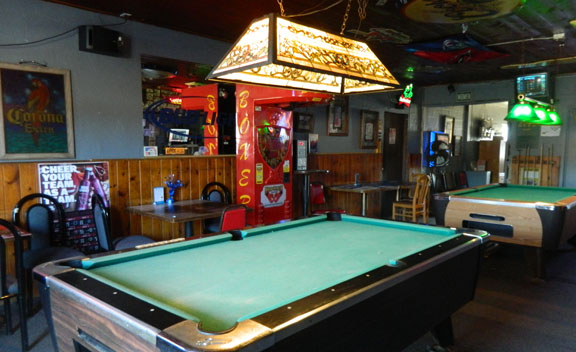
Billy Jacks - est. 1954 - the oldest saloon in town!
--------------------------------------------------------------------
MAYER
On state route 69 between Prescott and I-17. Mayer is an old town set back in the hills above rt. 69 but with many businesses right on it. The historic district is very charming with many old buildings and vehicles.
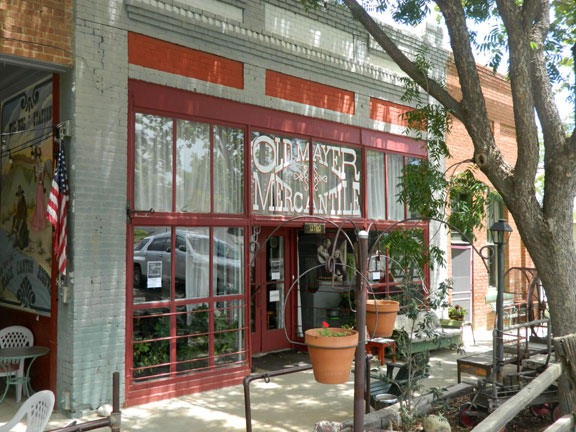
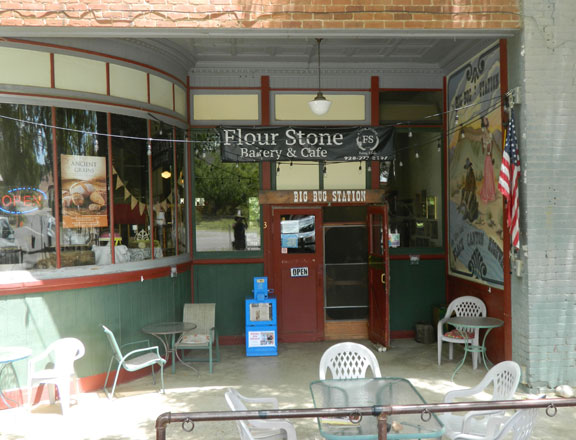
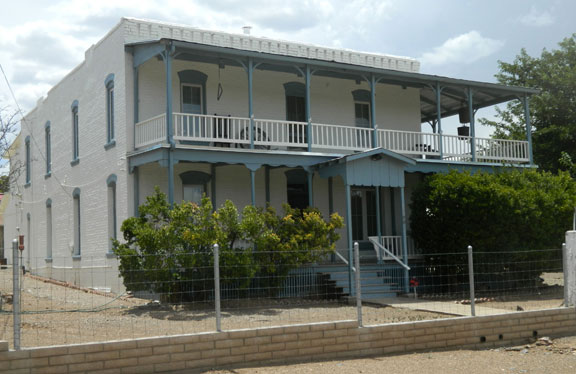
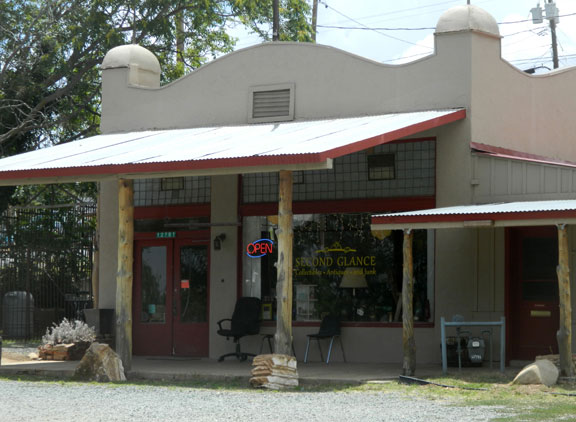
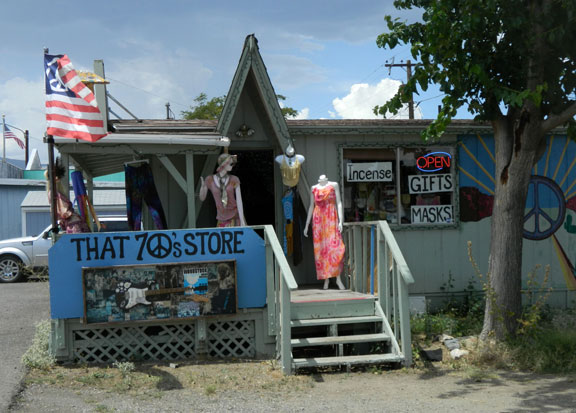
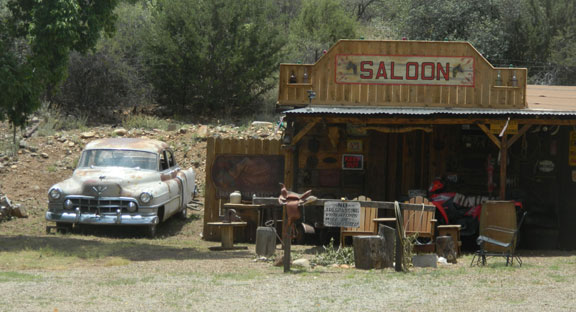
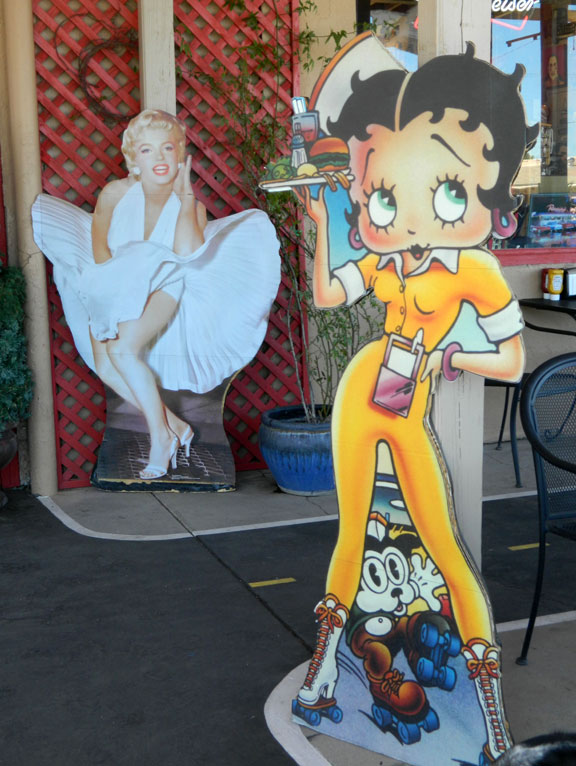
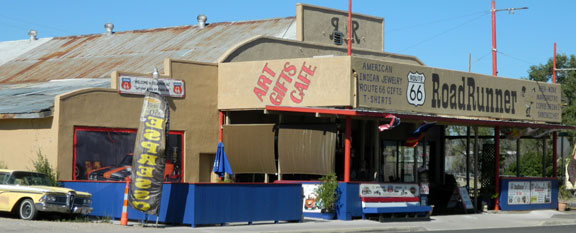
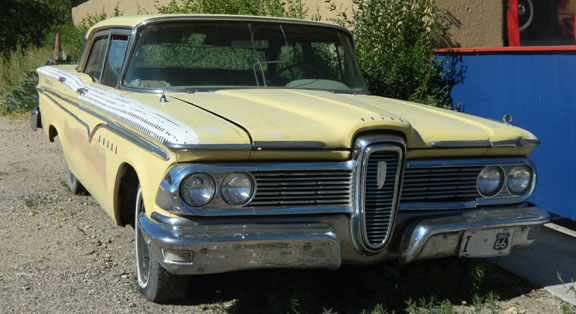
ABOVE: The most famous girls outside on the patio at The Road Runner Cafe and one of the world's most infamous cars: The ill fated Ford Edsel. I like to hang out there in the summer months with my dog Lola because the patio is dog friendly and the staff always brings a bowl of water for her!
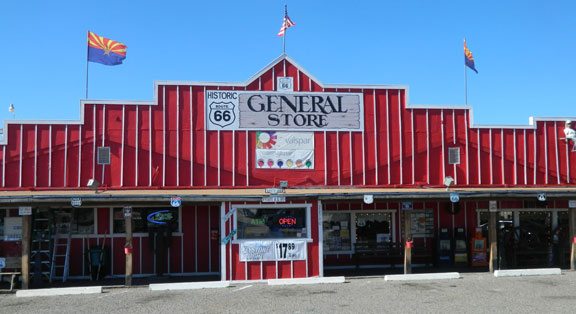
The Seligman General Store: Everything from hardware to housewares and everthing in between!
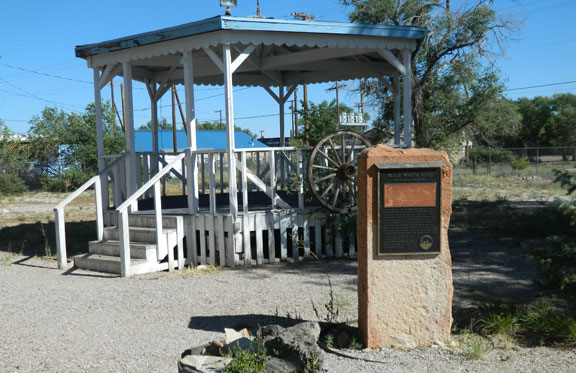
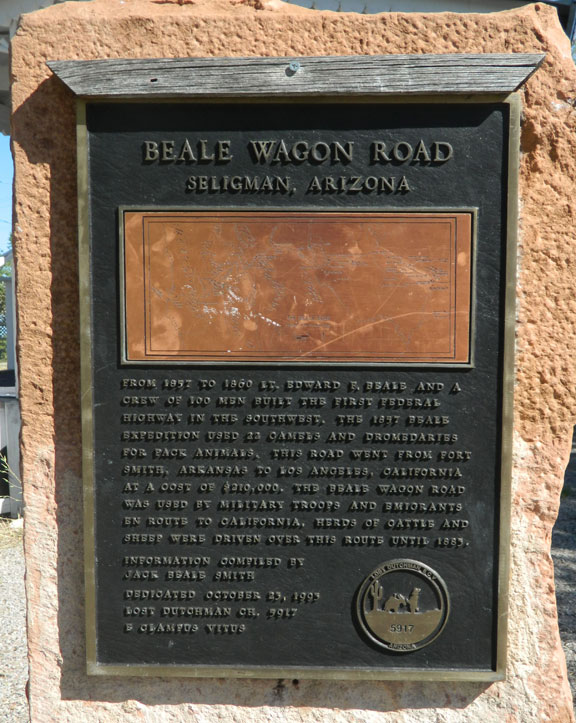
ABOVE: The historic marker for Ned Beale, chosen by then Secretary of War, Jefferson Davis to survey and build the first US highway in the Southwest in 1857. In a controversial and creative move, Beale imported camels and drivers (since the camels only understood commands in Arabic) from the middle east. They out performed US army mules by far BUT horses and mules were afraid of and got spooked by the camels so they were eventually abandoned (literally).

West of Seligman
along Historic Route 66
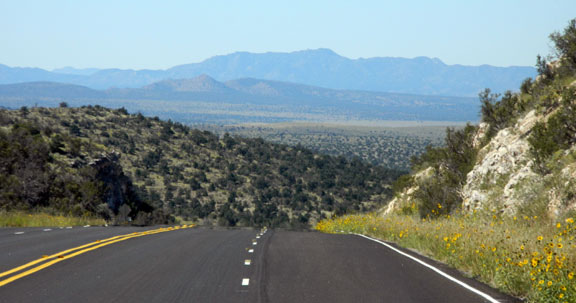
Heading west outside of Seligman
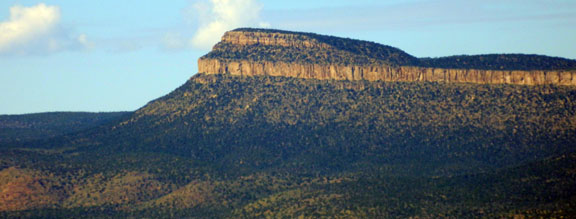
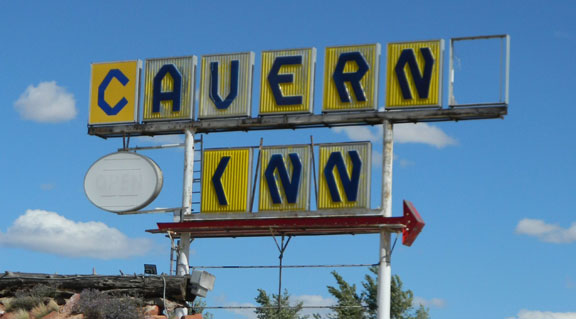
The Grand Canyon Caverns offer tours and more!
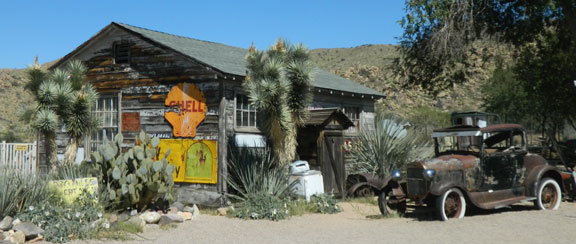
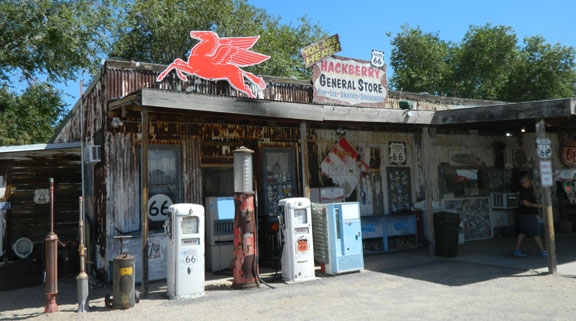
Hackberry is open year round. Memorabilia, gifts and more...
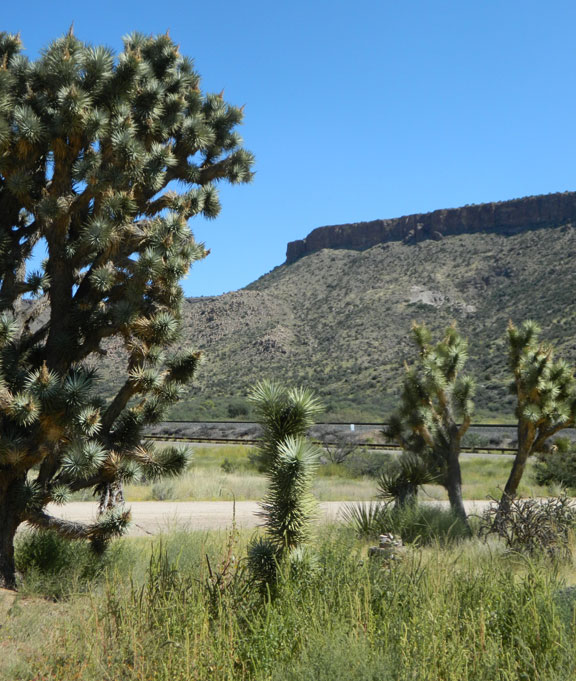
Valentine, AZ - Royre 66 follows the Santa Fe line fo rmany miles.
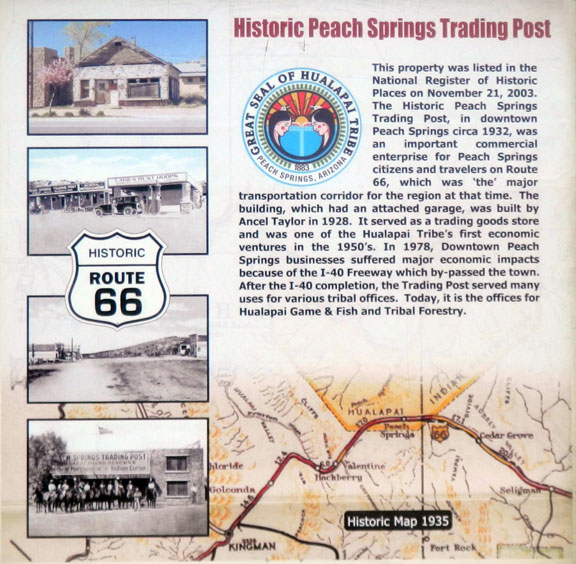
Peach Springs is on the Hualapai Reservation. Sotes, lodging and authentic Indians wares.
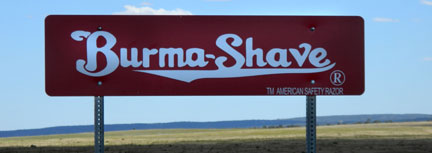
The ubiquitous Burma-Shave signs along Route 66
One series read:
T’WOULD BE MORE FUN
TO GO BY AIR
IF WE COULD PUT
THESE SIGNS UP THERE
BURMA-SHAVE. -
------------------------------------------------------------------

A short trip east on I-40 and/or route 66:The Ash Fork, AZ Museum.
Below is nside the museum. Well worth the time and trip. There are also maps and books for sale in the reception area.
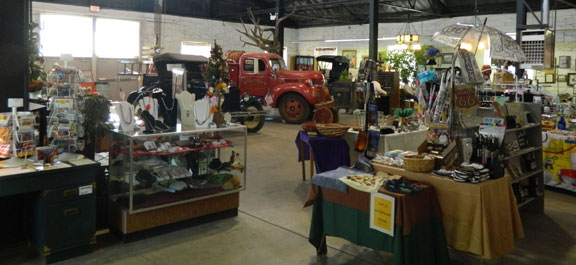
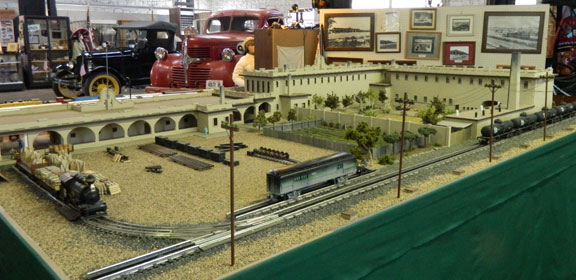
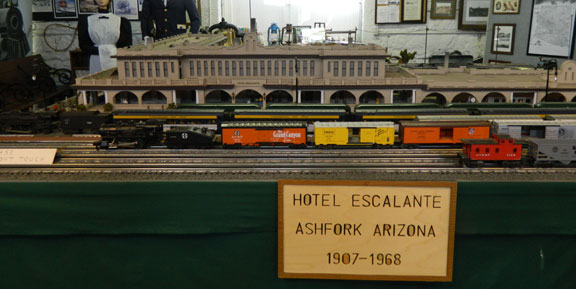
THE ESCALANTE HOTEL
The Grand Escalante Hotel was a Harvey house, the idea of Mr. Fred Harvey who convinced the Santa Fe Railroad that passengers should have a decent place to stay or eat while travelling by rail. He built hotels all the way from Chicago to California along the rail line. For some work, he hired local fellows. For the women that worked as maids or in the restaurant, he hired young ladies from the east in the big cities where work was scarce. They came west to find jobs and husbands but he made them sign contracts promising him to work for a year before leaving or getting married. They got paid $17 a month and got free room and board, which was a real good job back then. Called the “Harvey Girls,” but also known as “Biscuit Shooters” because of how fast and well they handled the food and the customers in the restaurant. Sometimes they got married before the year was up, but he didn’t hold hard feelings for them – often he would throw them a little party and keep them on if they wished.
The fate of the hotel linked tightly at first to the railroads, and then to travelers along famous US route 66. Sadly, the hotel closed in 1950 and demolished in 1966.
-----------------------------------
THE RAILROADS
People travelled Ned Beal’s road by stagecoach and wagons. A freight road travelled across Arizona and down to Prescott, the territorial capitol before it became a state in 1912. By this time, Ask Fork was a busy little place but because wells could not be made deep enough to reach water, it had to be brought in on wagons.
In 1883, the railroad went through and the trains brought prosperity and water to town. Holbrook, Winslow, Flagstaff, Williams, Ash Fork and Seligman all grew up as water stops for steam locomotives that could only go so far before adding water to their boilers. Large cattle and sheep ranches prospered and the town grew with the railroads, but 1885 also brought the first of many fires that would destroy large parts of the town. Undaunted the people re-built and carried on.
The Civil War had delayed the transcontinental railroad across northern Arizona for several years. When construction began in 1881, towns began to sprout up along the Atlantic and Pacific line, later be called the Santa Fe line.
In 1881, construction began on the transcontinental railroad across Northern Arizona. Building a railroad across this region of deep canyons, rugged deserts, and rocky plateaus was no easy task.
In 1882, Ash Fork, AZ was founded with the arrival of the Atlantic and Pacific Railroad – the famous Atchison Topeka and the Santa Fe. Today it is the BNSF – the Burlington Northern & Santa Fe.
All towns across northern Arizona are between 18 and 25 miles apart depending on the steepness of the terrain.Why? Because in the age of steam locomotives, that was as far as they could go without taking on water! Kingman, Seligman, Ash Fork, Williams, Flagstaff, Winslow and Holbruck, St Johns....

Seligman, AZ - founded in 1886